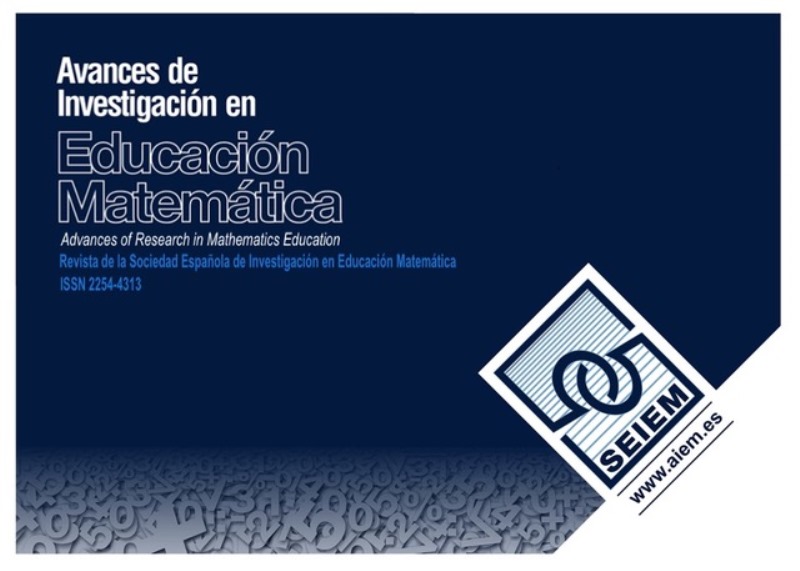Inventing Numerical Sentences and Stories to Evidence the Development of Algebraic Thinking
DOI:
https://doi.org/10.35763/aiem28.7544Keywords:
Mathematics Education, Primary students, Early algebraAbstract
In this article, we aim to address the following research questions: What algebraic understandings are evidenced when a group of 9–10-year-old students invent numerical sentences and mathematical stories? And what contributions do these tasks make to the development of algebraic thinking from both structural and analytical perspectives? We analyse students’ responses by focusing on the operations and properties involved, the meanings attributed to the equal sign, and the ways in which students refer to and reason about unknown quantities. The results show that students invent sentences involving numbers and unknown quantities, drawing on different properties of operations and demonstrating relational understandings of the equal sign. When inventing stories, they relate unknown quantities to everyday situations and construct narratives that are coherent with the given equation. We discuss the role of problem invention in the construction of algebraic thinking in the early years of primary education.
Downloads
References
Báró, E. (2023). Exploring students’ algebraic thinking through problem-posing activities. En I. Papadopoulos & N. Patsiala (Eds.), Proceedings of the 22nd conference on Problem Solving in Mathematics Education - ProMath 2022 (pp. 165-178). Faculty of Education, Aristotle University of Thessaloniki.
Blanton, M., Brizuela, B., Stephens, A., Knuth, E., Isler, I., Gardiner, A., Stroud, R., Fonger, N., & Stylianou. D. (2018). Implementing a framework for early algebra. En C. Kieran (Ed.), Teaching and learning algebraic thinking with 5- to 12-year-olds: The global evolution of an emerging field of research and practice (pp. 27-49). Springer.
Cai, J., & Hwang, S. (2020). Learning to teach through mathematical problem posing: Theoretical considerations, methodology, and directions for future research. International Journal of Educational Research, 102, 101391. https://doi.org/10.1016/J.IJER.2019.01.001
Cañadas, M. C., Molina, M., & del Río, A. (2018). Meanings given to algebraic symbolism in problem-posing. Educational Studies in Mathematics, 98(1), 19-37. https://doi.org/10.1007/s10649-017-9797-9
Carpenter, T. P., Franke, M. L., & Levi, L. (2003). Thinking mathematically: Integrating arithmetic and algebra in elementary school. Heinemann.
Carpenter, T., & Mosser, J. (1983). The acquisition of addition and subtraction concepts. En R. Lesh & M. Landau (Eds.), Acquisition of mathematics: concepts and processes (pp. 7-44). Academic Press.
Christou, C., Mousoulides, N., Pittalis, M., Pitta-Pantazi, D., & Sriraman, B. (2005). An empirical taxonomy of problem posing processes. ZDM – Mathematics Education, 37(3), 149-158. https://doi.org/10.1007/s11858-005-0004-6
Duval, R. (2006). Cognitive analysis of problems of comprehension in a learning of mathematics. Educational Studies in Mathematics, 61(1), 103-131. https://doi.org/10.1007/s10649-006-0400-z
Fernández-Millán, E., & Molina, M. (2016). Indagación en el conocimiento conceptual del simbolismo algebraico de estudiantes de secundaria mediante la invención de problemas. Enseñanza de las Ciencias, 34(1), 53-71. https://doi.org/10.5565/rev/ensciencias.1455
Kieran, C. (2022). The multi-dimensionality of early algebraic thinking: background, overarching dimensions, and new directions. ZDM – Mathematics Education, 54(6), 1131-1150. https://doi.org/10.1007/S11858-022-01435-6/FIGURES/4
León, O., & Montero, I. (1998). Diseño de investigaciones. Mcgraw Hill.
Molina, M. (2006). Desarrollo del pensamiento relacional y comprensión del signo igual por alumnos de tercero de Educación Primaria [Tesis Doctoral sin publicar]. Universidad de Granada.
Molina, M. (2021). Investigación de diseño educativa: un marco metodológico en evolución. En P. D. Diago, D. F. Yáñez, M. T. González-Astudillo, & D. Carrillo (Eds.), Investigación en Educación Matemática XXIV (pp. 83-97). SEIEM.
Molina, M., & Ambrose, R. (2008). From an operational to a relational conception of the equal sign: Third graders’ developing algebraic thinking. Focus on Learning Problems in Mathematics, 30(1), 61-80.
Molina, M., & Cañadas, M. C. (2018). La noción de estructura en early algebra. En P. Flores, J. L. Lupiáñez, & I. Segovia (Eds.), Enseñar matemáticas, homenaje a los profesores Francisco Fernández y Francisco Ruiz (pp. 129-141). Atrio.
Pinto, E., Ayala-Altamirano, C., Molina, M., & Cañadas, M. C. (2023). Desarrollo del pensamiento algebraico a través de la justificación en educación primaria. Enseñanza de las Ciencias., 41(1), 149-173. https://doi.org/10.5565/rev/ensciencias.5835
Radford, L. (2022). Introducing equations in early algebra. ZDM – Mathematics Education, 54(6), 1151-1167. https://doi.org/10.1007/s11858-022-01422-x
Ruthven, K. (2020). Problematising learning to teach through mathematical problem posing. International Journal of Educational Research, 102, 101455. https://doi.org/10.1016/j.ijer.2019.07.004
Stoyanova, E., & Ellerton, N. F. (1996). A framework for research into students’ problem posing. En P. Clarkson (Ed.), Technology in mathematics education (pp. 518-525). Mathematics Education Research Group of Australasia.
Walkoe, J., Walton, M., & Levin, M. (2022). Supporting teacher noticing of moments of algebraic potential. Journal of Educational Research in Mathematics, 32(3), 271-286. https://doi.org/10.29275/jerm.2022.32.3.271
Wilkie, K. J. (2024). Creative thinking for learning algebra: Year 10 students’ problem solving and problem posing with quadratic figural patterns. Thinking Skills and Creativity, 52, 101550. https://doi.org/10.1016/j.tsc.2024.101550
Downloads
Published
How to Cite
Issue
Section
License
Copyright (c) 2025 Eder Pinto, Cristina Ayala-Altamirano, Marta Molina, María C. Cañadas

This work is licensed under a Creative Commons Attribution 4.0 International License.
The articles published in this journal are under a license Creative Commons: By 4.0 España from number 21 (2022).
Authors who publish with this journal agree to the following terms:
- Authors retain copyright and keep the acknowledgement of authorship.
- The texts published in this journal are – unless indicated otherwise – covered by the Creative Commons Attribution 4.0 international licence. You may copy, distribute, transmit and adapt the work, provided you attribute it (authorship, journal name, publisher) in the manner specified by the author(s) or licensor(s). The full text of the licence can be consulted here: http://creativecommons.org/licenses/by-nc/4.0.
- Authors are able to enter into separate, additional contractual arrangements for the non-exclusive distribution of the journal's published version of the work (e.g., post it to an institutional repository or publish it in a book), with an acknowledgement of its initial publication in this journal.
- Authors are permitted and encouraged to post their work online (e.g., in institutional repositories or on their website) prior to and during the submission process, as it can lead to productive exchanges, as well as earlier and greater citation of published work (See The Effect of Open Access).
Funding data
-
Agencia Nacional de Investigación y Desarrollo
Grant numbers FOVI240238 -
Agencia Estatal de Investigación
Grant numbers PID2020-113601GB-I00 -
Agencia Estatal de Investigación
Grant numbers PID2024-157106NB-I00









